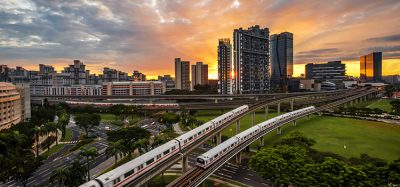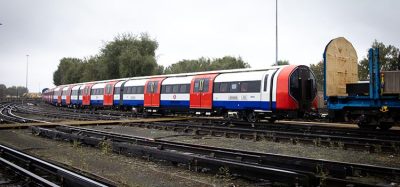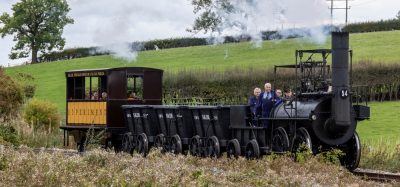The DESTinationRAIL project reaches a successful conclusion
Posted: 11 May 2018 | Michael Robson - Robson’s International Railway Consultancy | No comments yet
Michael Robson, a Member of the DESTinationRAIL Executive Board, discusses the project, its objectives and the successful case studies that it has completed…


The DESTinationRAIL project, funded as part of the Horizon 2020 programme, is a three-year, €3 million project involving 15 partners. The project began in May 2015 with the final conference held at the University of Zagreb on 26 – 27 April 2018. Various presentations have been given at selected conferences throughout the three years, including the Transport Research Arena held in Warsaw in 2016 and Vienna in 2018.
The project’s aim was to provide solutions for a number of problems faced by EU infrastructure managers, using novel techniques for identifying, analysing and implementing remedial work on critical rail infrastructure.
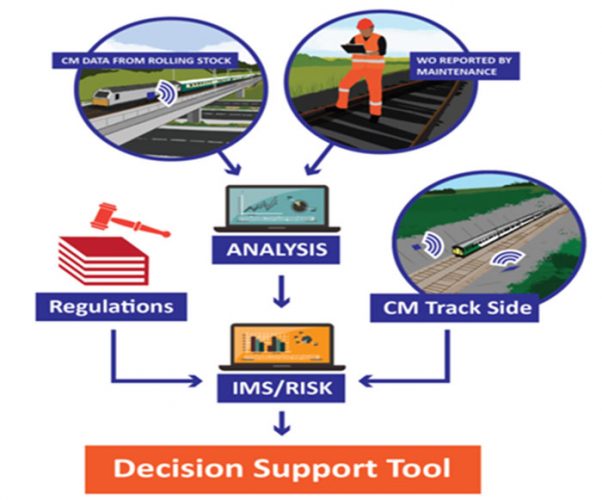

Figure 1
The objective of the project was achieved through a holistic management tool based on the FACT (Find, Analyse, Classify, Treat) principle.
Find: Improved techniques for the assessment of existing assets have been developed and tested on the live railway.
Analyse: Advanced probabilistic models fed by performance statistics, using databases controlled by an information management system, have been used to determine the level of safety of individual assets.
Classify: The performance models allow a step-change in risk assessment, moving from the current subjective (qualitative) basis to become fundamentally based on quantifiable data. A decision support tool will take risk ratings and assess the impact on the traffic flow and whole life cycle costs of the network.
Treat: Novel and innovative maintenance and construction techniques for treating rail infrastructure including tracks, earthworks and structures have been developed and assessed.
These solutions have been tested using the decision support tool, which allows rail infrastructure managers to make rational investment choices, based on reliable data, which can be seen in Figure 1.
Having briefly described the project, I would now like to give some examples of techniques which, as a result of our work, have been implemented by various rail infrastructure managers.
Norwegian railways, Bane NOR, following work with the project, have used Ground Penetrating Radar (GPR) to survey its lines; establishing the condition of the ballast prior to determining the ballast/track renewal programme. The use of GPR is considerably cheaper than the traditional method of taking samples and provides a visual record of ballast deterioration over time.
Croatian Railway, HZ, provided some of the test sites for the use of unmanned ariel systems (UAS) which have been used to locate and identify high risk assets before they fail, using a combination of remote monitoring and expert judgement to observe the condition of embankments and rock slopes.
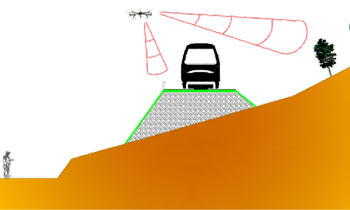

Figure 2a
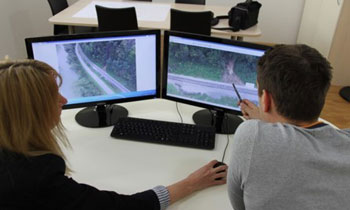

Figure 2b
Currently, standard visual assessments usually consist of personnel walking along the line being examined. In the case of certain assets, such as steep slopes, essential information (land use changes at the crest, the condition of drains and presence of cracks) often cannot be seen. UAS fitted with high-resolution cameras along with several types of sensor e.g. GPS (global positioning system), mobile LIDAR system (light detection and ranging), thermal cameras and multispectral cameras can enable a more detailed inspection to be carried out. Through the application of such sensors it is possible to monitor and create 3D models of hotspots along the track that provide cross sections volume determinations, contour lines and other parameters that are needed for engineering analyses. Their use is especially appropriate in case of steep and high cuttings and other inaccessible sites where implementation of traditional survey procedures can sometimes prove hazardous, as displayed in Figure 2a and 2b.
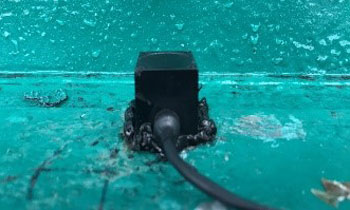

Figure 3a
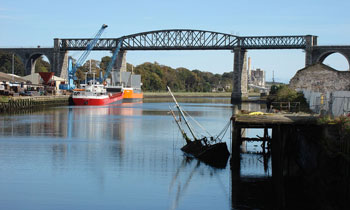

Figure 3b
Ireland, Irish Rail, IE, provided various test sites, including the Drogheda viaduct, as shown in Figure 3a and 3b, for the work to develop ‘Probability Based Multi Criteria Based Performance Optimisation of Railway Infrastructure’. This methodology has been developed for various aspects of railway infrastructure including structures, earthworks and tracks. The developed basis provides infrastructure managers with the facility to optimise budgets and resources from the perspective of cost minimisation. This work is being used in conjunction with the risk management tool on Irish Railways.
Work has also been carried out in Germany on the DB network looking at track stability. These are just some of the examples of work which the project has completed to monitor and detect ‘hot spots’ on the network.
Having developed techniques for finding and analysing problems the project moved onto developing a ‘Risk Assessment Methodology’ which feeds into the decision support tool, both of which are currently being trialled by Irish Railways, IE.
The results enabled risk to be assessed at four distinct levels: Individual objects, individual sections, a route and network level.
Having assessed the risk, the intervention development process allows the infrastructure manager to develop the optimal intervention programme of work, which is considered to be the one that reduces risk the most given a fixed budget. This programme can also be broken down to object, route, section and network level, as displayed in Figure 4.


Figure 4
Having developed risk assessment and intervention development processes the project needed to provide a further input for the decision support tool, namely a whole life cycle cost model. Figure 5 shows inputs and outputs required by the model.


Figure 5
Network level analysis can be used to determine the effects of combining maintenance schemes (of same and different assets) being considered which can enable the reduction of overall direct and indirect costs. For example, schemes can be considered for combination if they meet three criteria: Firstly, they can be scheduled within the same financial year, secondly, they are separated by relatively short time intervals (e.g. within two years of each other) and thirdly, they are on the same section of the network between two nodes.
The rail network around Dublin has been chosen as the case study network with a model of the network developed which is being trialled by Irish Railways, IE. Figure 6 shows a diagram of the area involved, demonstrating how it is possible to drill down to show further details.
A number of DESTinationRAIL papers were presented at the recent Transport Research Arena (TRA), which was held in Vienna from 16 – 19 April, and covered:
- The use of non-intrusive monitoring for slope stability assessments
- Analysing the effect of rainfall on railway embankments using fragility curves
- A machine learning approach for maintenance prediction of railway assets.
TRA also presented the DESTinationRAIL Project Co-ordination Professor, Ken Gavin, with the award of Senior Researcher, Rail for his work on various rail infrastructure projects.


Figure 6
The final project conference was held on 26 – 27 April 2018, at the University of Zagreb. This presented an excellent opportunity to showcase the DESTinationRAIL outputs, which included:
- New practical ways to monitor the infrastructure to locate hot spots
- A probabilistic model for infrastructure
- Proven use of new materials to reduce infrastructure costs
- A risk assessment methodology
- A whole life cycle cost model
- A decision support tool (DST).
These measures have been trialled or implemented on several networks with the objective of reducing costs and improving efficiency, thus making the network more sustainable. In order to help infrastructure managers in implementing the project results on their own networks, a number of guidelines have been produced.
Biography


Global Railway Review Autumn/ Winter Issue 2025
Welcome to 2025’s Autumn/ Winter issue of Global Railway Review!
The dynamism of our sector has never been more apparent, driven by technological leaps, evolving societal demands, and an urgent global imperative for sustainable solutions.
>>> Read the issue in full now! <<<
Related topics
Big Data, Infrastructure Developments, Rolling Stock Orders/Developments




